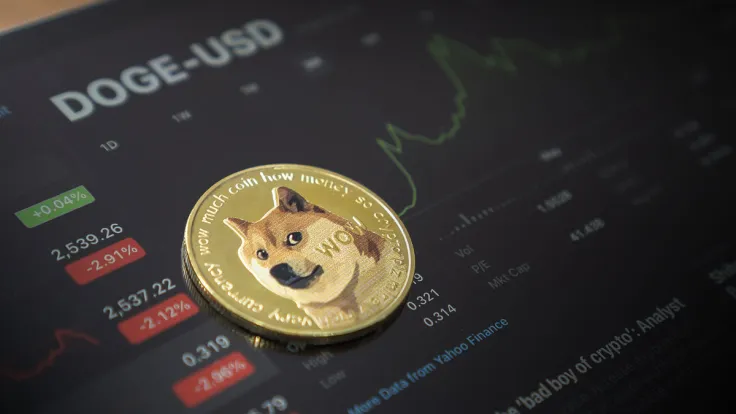
Disclaimer: The opinions expressed by our writers are their own and do not represent the views of U.Today. The financial and market information provided on U.Today is intended for informational purposes only. U.Today is not liable for any financial losses incurred while trading cryptocurrencies. Conduct your own research by contacting financial experts before making any investment decisions. We believe that all content is accurate as of the date of publication, but certain offers mentioned may no longer be available.
Dogecoin-focused Twitter account Mishaboar has taken to Twitter to point out the recent surge in Dogecoin's network activity.
According to him, several Dogecoin blocks are nearing full capacity, which he says is due to the "spam associated with the DRC20 token minting frenzy."
No, nothing to do with that - that bridge is a centralized solution with a centralized custodian where you give them your #Dogecoin and they give you back a token on the ETH network representing Dogecoin, which you should be able to redeem at any time for on-chain real Dogecoin.…
— Mishaboar (@mishaboar) May 18, 2023
He explains in another tweet the implications of such a state for the Dogecoin network: "Fees go up, transactions with lower fees are slowed down, and the mempool grows."
Mishaboar adds that as Dogecoin blocks fill up, those sending transactions need to pay more in transaction fees to have their transaction included in the next block. This might cause an increase in transaction fees or a delay in transaction times, as has happened with Bitcoin lately.
Dogecoin reached new highs in daily transactions this week due to the newly created standard — DRC-20 — which allows for the creation of meme coins on the Dogecoin network.
According to Mishaboar, the new DRC20 "tokens" are just Dogecoin network transactions with extra data attached to them that are supposed to simulate the creation of tokens. It remains a "what if" hypothetical game because there are yet no websites or marketplaces where users may utilize these "tokens" and trade them.
He refers to the DRC20 token minting frenzy as an abuse of the network, adding that the token creators seem to be taking advantage of Dogecoin's cheap fees.
Dogecoin developer sheds further light
In light of the recent surge in network activity, Patrick Lodder, a Dogecoin developer, notes in recent tweets that there is "actual abuse at scale happening on the network."
He shares a throwback on the history of Dogecoin fees, the dust limit and its core policy on spam management.
Clarification 🧵 on Dogecoin Core policy regarding spam management.
— Your Friend (@patricklodder) May 18, 2023
Back in 2021 a lot of people were complaining about the height of Dogecoin fees and the minimum of 1 DOGE outputs (dust limit). I researched what values would be sensible, and how to prevent this in the future.
Lodder recounts that 18 days after its launch, the Dogecoin network saw enormous amounts of spam. To combat that, a soft dust limit was introduced, making it expensive to spam while hardcoding a 1 DOGE fee. The hard dust limit prevented any transaction from being sent for less than 1 DOGE.
Addressing the concerns raised, a proposal to lower fees and remove hard-coded policies in favor of configurability, was published in the middle of 2021. It was implemented in two minor releases.
While a 100-fold decrease in minimum fees and dust limits was likely to be desirable, Lodder says node operators can change their policies as they see fit without the need for developer intervention.

 Dan Burgin
Dan Burgin Vladislav Sopov
Vladislav Sopov U.Today Editorial Team
U.Today Editorial Team